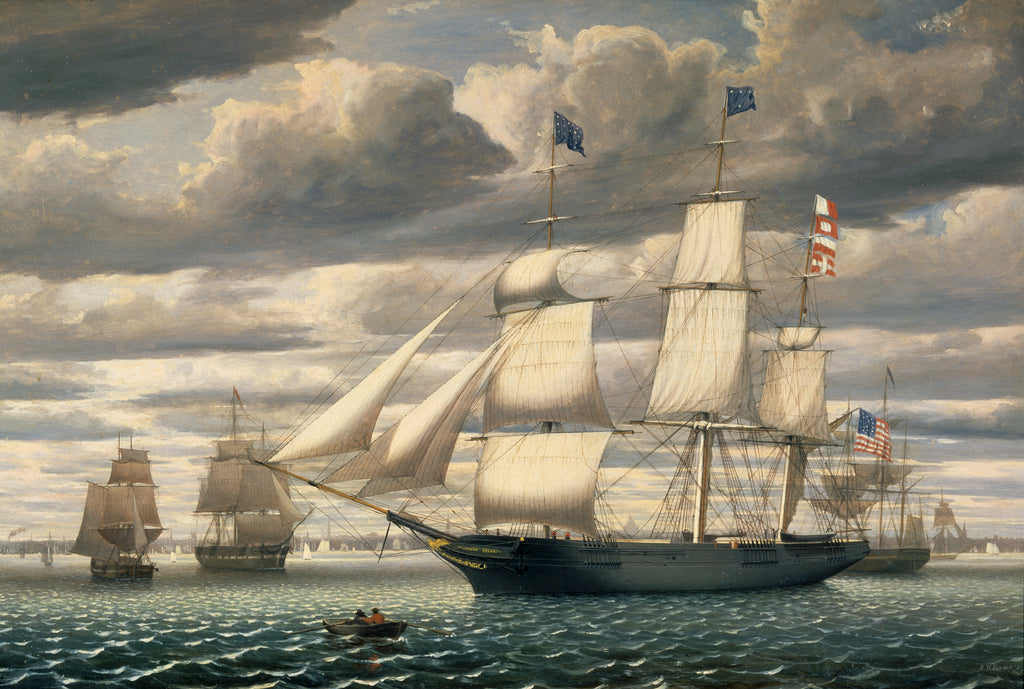The Little Ship That Upended the Global Tea Trade

These days, online tea sellers bend over backward to stock new lots of tea for drinkers as quickly as possible. This is particularly the case for our Darjeeling 1st Flush, which we receive by express air mail from India so you can taste the delicate spring leaves just weeks after harvest.
Yet the new-tea rush of today doesn't hold a candle to what tea traders did in the 19th century—including the construction of a novel type of sailing ship, largely for the purpose of transporting tea from China to Britain quicker than the competition. These slimmer, faster vessels with stacks of enormous sails were called clipper ships. They moved at a clip (get it?), efficiently harnessing the wind to reach speeds as fast as 20 nautical miles per hour. That may not sound like much in 2022, but it was a major improvement over the heavy cargo ships of the era. Were it not for the clipper ship, the Western tea landscape might look very different today.
The UK Tea & Infusions Association notes that from the 17th century through 1834, the British East India Company held a monopoly on the tea trade between Britain and China. Back then, imperial China was essentially the only tea exporter in town, and with an ironclad government contract, the Company wielded economic and political power akin to a nation-state.
Without the pressure of competition, the Company favored economy over expediency when it came to their cargo vessels. East Indiamen, as the heavy freighters were called, could carry up to 1,200 tons of cargo. Larger shipments meant lower transport costs at the expense of long waits for new tea. Vessels would typically embark from Britain in January, the UK T&I Association explains, sail around Africa's Cape of Good Hope, and reach Chinese ports by September of that year. Return voyages could take even longer, up to 12 months.
Even if tea sellers had all the right connections, their "fresh" spring harvest tea would be at least a year old at time of import. This may be one of the reasons why Western tea importers in the 19th century began to focus more heavily on black teas from China, rather than the green teas that were more popular at home beforehand. Black teas, with their heavy oxidation and slightly lower water content, handled the long ocean voyage better than greens; they were less likely to mold, mildew or flatten in taste from a year at sea.

Everything changed in the early 1830s when the British East India Company lost its tea monopoly. Suddenly, anyone with a ship and sufficient stores of silver—China's preferred currency for foreign trade at the time—could become a tea transporter of their own. Tea's popularity would only grow over the course of the century, both in Britain and North America. If your tea arrived before the competition's, this lucrative market was yours for the taking.
Clipper ships weren't designed specifically for the tea trade, but it didn't take long for them to become the preferred vessels for shipping high-value goods over long distances. "Baltimore clippers," as they would come to be known, could only carry a fraction of the cargo of the Company's East Indiamen, however they could make the journey to China and back in half the time, with a small crew of just 25 to 50 sailors. Images of the slender ships, packed with four or five masts that each anchored a set of sails, became linked with the tea industry, adorning packaging for decades to come.
Most of the early clippers were built in American docks, and within a decade of the British East India Company losing its monopoly, a new cohort of American "clipper barons" made millions off trade with China and other faraway nations. In addition to tea, much of this wealth was accrued by transporting opium, a crop that had devastating effects on the local workforce who prepared and packed it. Historian Steven Ujifusa, the author of the book Barons of the Sea, notes that millions of Chinese became addicted to the drug as the result of this trade; the addiction crisis eventually became the trigger for the First Opium War between Britain and China.
Clippers also became infamous for transporting human cargo. The United States officially abolished the Trans-Atlantic Slave Trade in 1808, but smugglers used them to carry enslaved Africans for decades to come, in brutal conditions, relying on the clippers' speed to evade inspection or capture.

By the 1860s, the era of the clipper ship was drawing to a close. With the opening of the Suez Canal and introduction of steam-powered cargo vessels and a growing network of railroads, the global tea trade officially entered the Industrial Age. Shipping manifests and sales receipts from this time are hard to come by, but it's safe to say that clipper ships—and the greater speed and diversity of tea sales they allowed—played a significant role in building the tea business in the West.
Ocean freight remains the most economical and ecological method for transporting tea across great distances, and it's how we move much of our collection. Modern cargo ships can make the journey from China or India to the United States in just 30 to 40 days. Recently though, labor and equipment shortages due to the pandemic have led to at times months-long delays in receiving shipments from our tea partners in Asia—and to drastically increased shipping fees. Last year, for instance, the price of a shipping container from a port in Kolkata jumped to five times the historic cost. Fortunately, modern tea packing and shipping practices mean that even in these challenging circumstances, the leaves' flavor and fragrance are not affected.
Still, the delays are enough to make one think back to those early days of the tea trade, and, inextricably, the clippers that carried it. "All I ask is a tall ship," poet John Masefield wrote in the 1902 poem Sea Fever, "and a star to steer her by."
Public domain clipper ship images from Wikimedia Commons.
